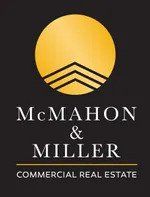2025 dining trends
dining trends thru may 2025
Dining industry
- Overall dining traffic is mostly flat, but growth is concentrated in specific areas. While nationwide dining visits were nearly unchanged in early 2025, western states like Utah, Idaho, and Nevada showed moderate growth, while states in the Midwest and South, along with Washington D.C., saw declines.
- Fine dining and coffee chains are growing through expansion, not just busier locations. These two segments were the only ones to see an increase in total visits, but their visits-per-location actually decreased, indicating that opening new stores is the primary driver of their growth.
- Higher-income diners are driving the growth in resilient categories. The segments that saw visit growth—fine dining and coffee—also attracted customers with the highest median household incomes, suggesting that affluent consumers are still spending on dining despite economic headwinds.
- Remote work continues to reshape dining habits. The share of suburban customers at fine dining establishments has increased since 2019, while it has decreased for coffee chains. This reflects a shift towards "destination" dining closer to home and away from commute-based coffee runs.
- Limited-service restaurants own the weekdays; full-service restaurants win the weekend. QSR, fast casual, and coffee chains see the majority of their traffic from Monday to Friday, whereas casual and fine dining see a significant spike in visits on weekends.
- Each dining segment dominates a specific time of day. Consumer visits are highly predictable by the hour: coffee leads in the early morning, fast casual peaks at lunch, casual dining takes the afternoon, fine dining owns the dinner slot, and QSR captures the late-night crowd.
visit sedona & the verde valley
5 reasons you should you invest in commercial real estate in 2024:
- Higher returns: Commercial real estate investments often have higher returns than residential investments, particularly in the long term while not disrupting local communities with short term residential rentals.
- Longer lease terms: Commercial leases tend to be longer than residential leases, providing a more stable income stream. Average lease length is 3-5 years when handled by McMahon & Miller Commercial.
- Professional management: Commercial properties are often managed by professional property management companies, which can take care of maintenance and other tasks with the costs of management passed through to the tenants via NNN leases. McMahon & Miller specializes in drafting commercial NNN leases for no charge as it is included with all listing agreements.
- Stronger bargaining power: As a landlord, you may have stronger bargaining power with commercial tenants due to the longer lease terms and higher demand for commercial space.
- Potential for tenant improvements: Commercial tenants may be willing to make improvements to a property in exchange for a longer lease, which can increase the value of the property.
5 Reasons an expert commercial real estate broker is worth its weight in gold:
- Expertise and knowledge: Real estate brokers have a deep understanding of the local real estate market, including current trends, property values, and zoning laws. They can provide valuable insights and guidance throughout the buying or selling process.
- Professional network: Real estate brokers have a network of contacts, including other brokers, agents, and industry professionals. This can be helpful in finding the right property or buyer for your needs.
- Marketing skills: Real estate brokers are skilled at marketing properties to potential buyers or renters. They have the resources and expertise to showcase your property in the best light and reach a wide audience.
- Negotiation skills: Real estate brokers are skilled negotiators and can help you get the best price for your property. They can also help you navigate the negotiation process and advocate for your interests.
- Access to listings: Real estate brokers have access to a wide range of listings, including those that may not be publicly advertised. They can help you find properties that meet your specific criteria and budget.
What is a 1031 Exchange?
A 1031 exchange, also known as a like-kind exchange or a tax-deferred exchange, is a provision in the U.S. Internal Revenue Code that allows real estate investors to defer paying capital gains taxes when they sell an investment property and reinvest the proceeds into another similar property. The term "1031 exchange" comes from Section 1031 of the Internal Revenue Code.
- To qualify for a 1031 exchange, both the property being sold (relinquished property) and the property being acquired (replacement property) must meet certain criteria:
- Like-Kind Property: The properties involved in the exchange must be of "like-kind," which means they should be of the same nature or character. In the context of real estate, this is a broad definition and typically refers to any type of investment property held for business or investment purposes.
- Investment or Business Use: Both the relinquished property and the replacement property must be held for investment or business purposes. Personal residences or properties primarily held for personal use do not qualify.
- Timelines: The exchange must follow specific timelines. Once the relinquished property is sold, the investor has 45 days to identify potential replacement properties. Within 180 days from the sale of the relinquished property (or the due date of the investor's tax return, whichever is earlier), the investor must acquire one or more of the identified replacement properties.
- Qualified Intermediary: The exchange must be facilitated by a qualified intermediary (QI) who holds the funds from the sale of the relinquished property and uses them to purchase the replacement property. The investor cannot have direct access to the funds without triggering a taxable event.
By utilizing a 1031 exchange, real estate investors can defer paying capital gains taxes that would have otherwise been due upon the sale of the relinquished property. The tax liability is deferred until the investor eventually sells the replacement property without performing another 1031 exchange. At that point, the accumulated capital gains tax would become due.


